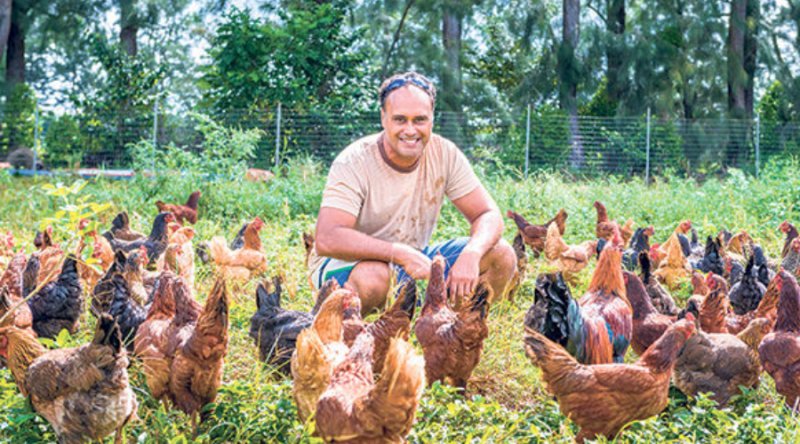A New Perspective Is Provided By The Kauai Chickens

Kauai Chickens
There have been chickens crossing the road on Kauai more than once.
They’re also hanging out on beaches, crowing in parking lots, and swarming in forests.
It is impossible to escape these birds,” says evolutionary biologist Eben J. Gering, who studies these great free-range birds at Michigan State University. There seems to be a range of lifestyles in these creatures, from eating garbage and cat food to being fed by tourists at the beach to hunting for native arthropods.”
Dr. Gering and his colleagues published a paper last month in the journal Molecular Ecology on the genetic heritage of the kauai chickens. These chickens are not just a curiosity for tourists, but also a window into how humans domesticated wildlife. Breeders can also take advantage of the reservoir of genetic traits.
A large proportion of modern chicken breeds descend from Southeast Asia’s red junglefowl, a cousin of pheasants that was domesticated over 7,000 years ago. There are also genes from gray junglefowls that may have been mixed in.
A genome of the red junglefowl was published in 2004 by American scientists. The genomic sequences of eight breeds of farm chickens were also sequenced by an international team of researchers in 2010. This team was led by Leif Andersson, professor of medical biochemistry and microbiology at Uppsala University in Sweden. In comparing the chicken DNA, Dr. Andersson was determined to answer the question “Which changes have occurred the most during the chicken domestication process?
A gene that forms a blueprint for the thyroid hormone receptor has been found to be mutated in all of the domesticated chicken breeds. Despite Dr. Andersson’s comment that it could play a role in chickens laying eggs continuously instead of just during certain seasons, science has yet to determine how the mutation affected the bird.
Researchers studied DNA from chicken bones recovered from European archaeological digs dating back 2,000 years and discovered that the mutation was not universal. This dispelled the idea that mutations were crucial to domestication.
Scientists explain the uncertainties by pointing out that little is known about the wild red junglefowl – the 2004 genome, for example, came from a single female. It is also possible that we are dealing with wild birds today that are different from those that were originally domesticated. Red junglefowl and chickens readily interbreed, and the wild birds may have become more chicken-like over time.
Despite our knowledge of the domestication process, Dr. Gering says there are still many things we don’t know about this bird.
A new perspective is provided by the Kauai chickens – a case of domestication in reverse.
Kauai chickens are said to be descendants of birds that escaped during Hurricanes Iwa in 1982 and Iniki in 1992, which tore open coops. Other Hawaiian islands also have feral chickens, but not in overwhelming numbers. Some speculate that mongooses, which eat eggs, weren’t released on Kauai. Dr. Gering suggested another reason could be that the two hurricanes only hit Kauai.)
The Audubon Society conducts annual bird counts that confirm this phenomenon: the number of kauai chickens exploded after hurricanes.
On Hawaii, chickens have a long history that dates back thousands of years. The Polynesians were the first to settle on these islands, who embarked on long ocean voyages to reach these islands in the expanse of the Pacific. Hawaii was settled by Polynesians more than 800 years ago.
In Polynesia, chickens, which were related to red junglefowl, were taken wherever the natives went.
In a cave on Kauai, scientists have discovered chicken fossils dating back to the Polynesian era – nearly two thousand years before Captain James Cook landed there. Researchers led by Alan Cooper, director of the Australian Center for Ancient DNA at the University of Adelaide, have extracted mitochondrial DNA from chicken fossils. They used it to reconstruct the path of Polynesian expansion. There is a separate genetic code for mitochondria in the cell, separate from the main DNA strands in the nucleus.
Researchers in Australia concluded Polynesians never reached South America, as South American chickens do not possess the genetic markers characteristic of Polynesians.
The scientists sequenced the DNA of 23 chickens from eight regions on Kauai for the latest study. Dr. Gering pondered, “How is the population of Polynesian red junglefowl evolving?” as farm chickens invaded an older polynesian red junglefowl population.
Several of the chickens possessed the mitochondrial DNA of Polynesian chicken bones from the Kauai cave; others possessed the DNA of recent European breeds. Some feral chickens did not have the mutated thyroid hormone receptor found in domesticated chickens. Ancient characteristics are also apparent in the birds’ appearances. Several of the birds look as if they just stepped off the farm, but many look more like red junglefowl from Indian forests or Vietnam forests with burnt orange and black plumage.
Prof. Dominic Wright of Linköping University, a collaborator of Gering, found that many of the roosters sounded more like red junglefowl.
The duration of other crowings varied. He said, “There are so many different kinds.” “The original wild reservoir certainly appears to have been retained.”
The red combs on the chickens’ heads are also of interest to Dr. Wright. Breeders have bred domestic hens to be larger and lay more eggs – traits that would seem to appeal to roosters who want to spread their genes. Large combs promote the ability of prolific hens to lay eggs. On Kauai, the feral hens have reverted to a more ancestral body shape – smaller in size and with smaller combs.
Dr. Wright said that suggesting there are other advantageous trade-offs. “A lot of selection must have occurred.”
Researchers plan to examine more of the characteristics of feral chickens in follow-up research – for example, how many eggs they lay? Frequently? Does their growth rate vary from farm breeds? — and then connect the genes that contributed to hybridization. A genetic study using chickens and red junglefowl is being conducted by Dr. Wright.
It was estimated by Dr. Gering that until recently, kauai chickens behaved much as those brought by the Polynesians a long time ago, dwelling in isolated areas of the island and being few in number. Once they mated with the escaped farm chickens or their descendents, they became more fertile and adapted to a wider range of habitats.
The reason we see them at Walmart and everywhere else, Dr. Gering said, is because of this.







